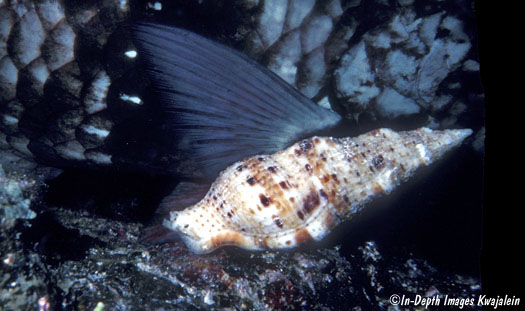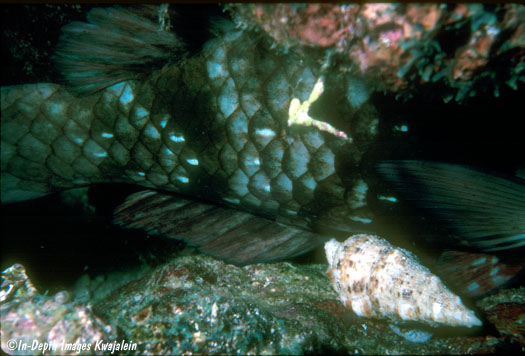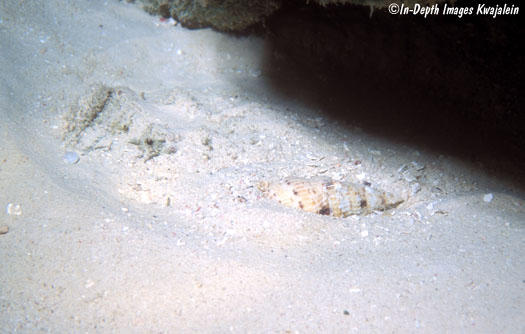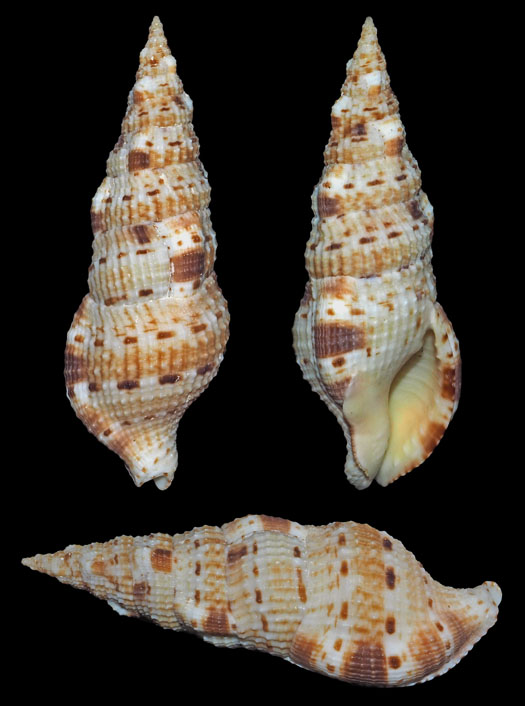
Colubraria muricata is the largest of the family in the Marshalls. Like most other species of Colubraria, these are usually active at night and parasitic upon sleeping fish, usually members of the family Scaridae. In the first two photos below, a specimen approaches a parrotfish sleeping in a ledge on the seaward reef. In addition to seaward reef surge channels, this species also lives on lagoon reefs and pinnacles, and has even been observed on lagoon slope shipwrecks.


Colubraria muricata can also actively feed during the day if the opportunity presents itself. On a day dive, we spotted a large stonefish, Synanceia verrucosa, buried up to its eyeballs in fine sand in a seaward reef surge channel cave. A nearby Colubraria muricata must have detected its proximity. We found the vampire gastropod on the sand over the fish's body. A trail in the sand indicated the shell had crawled a half meter or so to get here. After photographing the scene, we pulled the shell up, and it retracted its elongate proboscis, which showed it had indeed been feeding. On one other day dive, we found four Colubraria muricata on the surface of the sand in a lagoon reef ledge that had just been vacated by a large nurse shark as we approached. It appeared the shells would have been directly under the anal opening of the shark, and that they were all on the surface of the sand indicated they were almost certainly feeding until the shark moved off.


Created 24 October 2010
Updated 5 March 2020